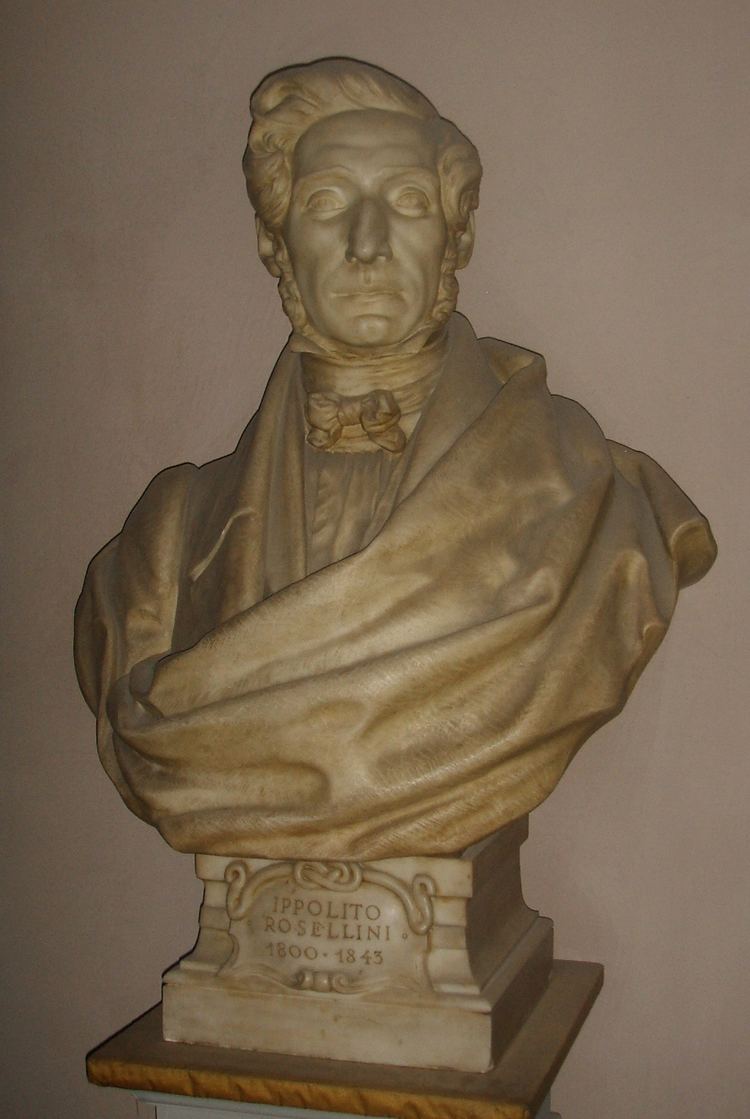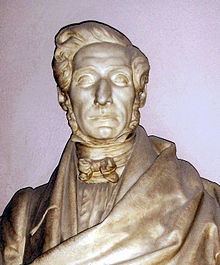Name Ippolito Rosellini Spouse(s) Zenobia Cherubini | Occupation Egyptologist Nationality Italian | |
 | ||
Born August 13, 1800 ( 1800-08-13 ) Pisa Known for I Monumenti dell'Egitto e della Nubia Parent(s) Giovan Battista RoselliniM.Angiola Biagetti | ||
Ippolito rosellini
Niccola Francesco Ippolito Baldassarre Rosellini, known simply as Ippolito Rosellini (13 August 1800 – 4 June 1843) was an Italian Egyptologist. A scholar and friend of Jean-François Champollion, he is regarded as the founder of Egyptology in Italy.
Contents

MONUMENTS OF EGYPT AND NUBIA
Biography

He was born in Pisa, eldest son of a family originally from Pescia. After studying Hebrew and graduating in theology at the University of Pisa in 1821, Rosellini studied oriental languages under Giuseppe Mezzofanti at Bologna until 1824, when he became professor of the same subject at the University of Pisa.
He was the first disciple, a great friend and an associate of Jean-François Champollion. They met in Florence in August 1825, during Champollion's journey to study the important Egyptological collections in Turin, Rome and Florence. In 1827, he went to Paris for a year in order to improve his knowledge of the method of decipherment proposed by Champollion. Here, he met and then married Zenobia, daughter of the Italian composer Luigi Cherubini. A year later, Rosellini accompanied Champollion in the latter's Egyptian exploration also known as the Franco-Tuscan expedition, as the leader of the Tuscan group (1828-29). The expedition was financed by the Grand-duke of Tuscany, Leopold II, and King Charles X of France.

Champollion's sudden death in 1832 left to the saddened Rosellini the whole responsibility of publishing the report of the expedition: between 1832 and 1843 he exposed the results in his most famous work, I Monumenti dell'Egitto e della Nubia, composed of three parts and nine volumes for a total of 3,300 text pages and 395 illustrated plates.
Since 1836, Rosellini's health started to decline possibly due to malaria, which ultimately led to his death on 4 June 1843 in Pisa. All his papers were donated to the library of the University of Pisa, while the last volume of the Monumenti was published posthumously in 1844. Three years after his death, his widow married his brother Ferdinando Pio a mathematician who adopted their three sons.
Selected works

